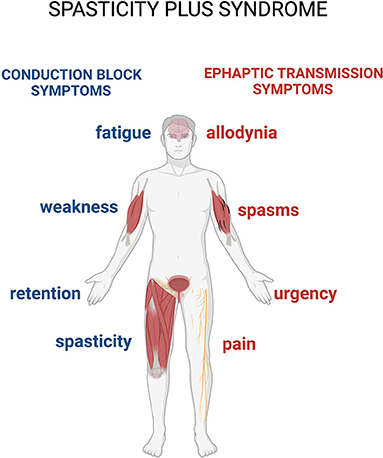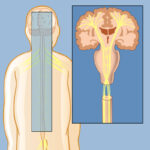Muscle spasticity is a common and challenging symptom experienced by individuals with multiple sclerosis (MS). It refers to the abnormal tightening or stiffening of muscles, which can lead to discomfort and impaired mobility. In this comprehensive guide, we will delve into the causes, symptoms, and available treatments for muscle spasticity caused by multiple sclerosis. Understanding the nature of this condition is crucial for managing its effects and improving the quality of life for MS patients.

What is Muscle Spasticity?
Muscle spasticity occurs when the muscles become excessively tight or stiff, resulting in limited movement and discomfort. In the context of multiple sclerosis, spasticity is caused by damage to the central nervous system (CNS), particularly the nerve fibers that carry signals from the brain to the muscles. This disruption in communication leads to abnormal muscle contractions and can affect various parts of the body, including the arms, legs, and torso.
The Role of the Nervous System in Muscle Control
The nervous system plays a vital role in regulating muscle movements. Nerve signals from the brain and spinal cord control voluntary muscle contractions, allowing for coordinated movements. In individuals with MS, the immune system attacks the protective covering of nerve fibers (myelin), disrupting the transmission of signals and resulting in muscle spasms and spasticity.
Causes of Muscle Spasticity in Multiple Sclerosis
Muscle spasticity in MS is primarily a result of neurological damage caused by the disease. Multiple sclerosis is an autoimmune condition that leads to the inflammation and destruction of myelin, the protective sheath around nerve fibers. This damage disrupts normal communication between the brain and muscles, leading to muscle stiffness and spasms.
1. Damage to the Central Nervous System (CNS)
The central nervous system consists of the brain and spinal cord, which are responsible for transmitting signals that control muscle movements. In MS, these signals are often interrupted or distorted due to demyelination, which leads to the onset of spasticity.
2. Muscle Overactivity
As the CNS becomes affected, the muscles may experience abnormal, excessive activity. This overactivity results in uncontrolled contractions, contributing to muscle spasticity. The legs and arms are the most commonly affected areas, leading to painful cramps and restricted movement.
3. Increased Muscle Tone
In MS, muscle tone can become abnormally high, causing the muscles to remain in a contracted state for extended periods. This constant muscle tension can cause discomfort and limit the range of motion in affected areas.
Symptoms of Muscle Spasticity in Multiple Sclerosis
Muscle spasticity manifests in various ways and can vary in severity from person to person. The symptoms may worsen over time or fluctuate, depending on the progression of multiple sclerosis.
1. Muscle Stiffness
One of the hallmark symptoms of muscle spasticity in MS is muscle stiffness. This often affects the legs, making it difficult for individuals to walk or move freely. The stiffness may range from mild to severe, and it can be exacerbated by physical activity or stress.
2. Pain and Discomfort
Muscle spasms associated with spasticity can be painful. The intensity of the pain may vary, but it often feels like a cramp or tightness in the affected muscle. This discomfort can be particularly troublesome for individuals with MS who already experience other symptoms, such as fatigue and weakness.
3. Impaired Movement and Mobility
Spasticity can significantly impact a person’s ability to move. The tightness in muscles can limit joint movement, making it harder to perform everyday tasks such as walking, bending, or dressing. In severe cases, individuals may require assistance with mobility.
4. Exaggerated Reflexes
In addition to muscle stiffness, individuals with MS may experience hyperactive reflexes (also known as hyperreflexia). These exaggerated reflexes can lead to sudden, jerky movements and contribute to the discomfort associated with muscle spasticity.
Diagnosis of Muscle Spasticity in MS
The diagnosis of muscle spasticity in multiple sclerosis typically involves a combination of clinical evaluation, medical history review, and diagnostic tests. A healthcare provider will assess the patient’s symptoms, including the frequency, intensity, and location of muscle stiffness and spasms. Diagnostic tests may include:
- Neurological Examination: This involves evaluating the patient’s reflexes, muscle strength, coordination, and sensation to determine the extent of the neurological impairment.
- MRI (Magnetic Resonance Imaging): An MRI scan can provide detailed images of the brain and spinal cord, allowing doctors to observe areas of demyelination and inflammation.
- EMG (Electromyography): This test measures the electrical activity of muscles and can help identify abnormal muscle contractions caused by spasticity.
Treatment of Muscle Spasticity in Multiple Sclerosis
While there is no cure for muscle spasticity caused by multiple sclerosis, various treatments and management strategies can help alleviate symptoms and improve mobility. Treatment plans are individualized based on the severity of spasticity and the specific needs of the patient.
1. Medications for Spasticity Relief
Several medications are used to treat muscle spasticity in MS, including:
- Baclofen: A muscle relaxant that reduces muscle tone and helps control spasms.
- Tizanidine: A medication that works by blocking nerve impulses to the muscles, reducing spasticity.
- Diazepam (Valium): A sedative that helps relax muscles and ease tension.
- Dantrolene: A medication that works by reducing muscle contractions.
- Botulinum Toxin Injections: In some cases, botulinum toxin injections may be used to target specific muscles and reduce spasticity.
2. Physical Therapy and Stretching
Physical therapy is an essential component of managing muscle spasticity in MS. A physical therapist can guide individuals through exercises and stretches designed to improve muscle flexibility, strength, and range of motion. Regular stretching can help prevent muscles from becoming too tight and reduce the frequency of spasms.
3. Occupational Therapy
Occupational therapy focuses on helping individuals with MS perform daily activities more efficiently. An occupational therapist may recommend adaptive devices, techniques, and exercises to enhance independence and reduce the impact of muscle spasticity on daily life.
4. Heat and Cold Therapy
Heat and cold applications can help relax muscles and reduce pain associated with spasticity. Heat therapy, such as warm baths or heating pads, can increase blood flow to muscles and alleviate tightness. Cold therapy, such as ice packs, can help reduce inflammation and numb pain.
5. Lifestyle Modifications
Certain lifestyle changes can help manage muscle spasticity in MS. These include:
- Maintaining a Regular Exercise Routine: Regular exercise can help improve muscle strength and flexibility.
- Staying Hydrated: Proper hydration is essential for maintaining muscle function and preventing cramps.
- Stress Management: Stress can exacerbate spasticity, so incorporating relaxation techniques such as deep breathing and meditation can be beneficial.
Prognosis and Outlook
The prognosis for muscle spasticity in individuals with MS varies depending on the severity of the disease and the effectiveness of treatment. In some cases, spasticity may worsen as MS progresses, while in others, it may remain stable or even improve with proper management. Early intervention and a personalized treatment plan are crucial in improving outcomes and enhancing the quality of life for individuals with MS.
Muscle spasticity due to multiple sclerosis is a complex and challenging symptom that can significantly impact a person’s quality of life. While there is no cure for spasticity, a variety of treatment options, including medications, physical therapy, and lifestyle modifications, can help alleviate symptoms and improve mobility. Early intervention and a comprehensive approach to managing spasticity are essential for minimizing the impact of this condition on individuals living with multiple sclerosis. By working closely with healthcare providers, those affected by MS can find effective strategies to manage muscle spasticity and maintain a high quality of life.

